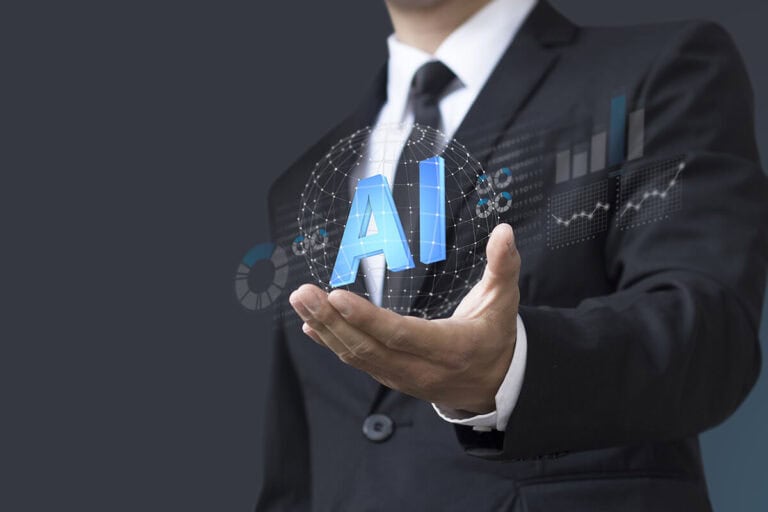Artificial intelligence (AI) has brought advancement across the industry. There are many AI use cases in industries due to the growing market for AI applications. However, the accuracy of the AI model depends on its training. This training of the AI model is complex. The entire process, from gathering the data to precisely labeling it, takes a lot of work.
Table of Contents
ToggleEarlier, these data were manually labeled. However, manual labeling is a tedious task, requiring a human labeler to label data individually. For instance, a business house wished to analyze the sentiment in the online reviews left by its clients. Imagine your business wants to create an accurate data model using 90,000 reviews. A labeler will need 750 hours to complete the work if they take 30 seconds to annotate each comment.
Hence, automated data annotation solutions were developed to save enterprises from the burden of simple labeling and redirect their attention to their core goals. These solutions help the business to label thousands of data within seconds.
In this blog, we will help you understand;
- What is Automated Data Labeling?
- How does auto-labeling work?
- Benefits of Automating Data Labeling
- Key Challenges To Automated Data Labeling
Automated Data Labeling: How It Works?
Automatic labeling refers to data annotation performed by software rather than humans. Data labeling experts develop AI that labels unlabeled, raw data in this process. The human labeler identifies and verifies the label. If the auto-label model successfully labels data, it is added to the entire dataset.
However, in some cases, the model only works in one go, and it may label the data incorrectly or inaccurately. Then, data given to the AI will be trained again, and the training loops continue till the model can label all the data correctly.
Once the mistakes have been fixed, and the data has been correctly labeled, it is added to the collection of labeled data for training. How accurately it labels the entire dataset decides whether the model can train other models. Ultimately, the ML teams train the multiple models using the accumulated labeled training data.
Although the automated data labeling process speeds up the labeling process, human-in-the-loop machine learning is crucial to guaranteeing the quality and accuracy of data labeling for machine learning. Once the data has been annotated, human labelers can manually check the work or fill in any gaps or areas that require more annotation.
Benefits of Automating Data Labeling
Here are some of the benefits of opting for automated labeling over a manual one.
- Reduced Workload
Traditionally, in manual data labeling procedures, an entire team of labelers must label hundreds of data daily. This can take weeks, even months, to completely label the data. Meanwhile, the business house may gather more data. To save time and effort, businesses opt for automation. Automation can reduce the human work required to undertake data annotation for a machine-learning project. An auto-labeling model may be used to train the data. An expert data labeler can review or revise annotations with lower confidence ratings. This entire procedure requires fewer people and effort.
- Better Accuracy Rate
Automated data labeling produces highly accurate data annotation using active learning, a semi-supervised method. This data is trained and tested until it reaches complete accuracy. Business houses can be relieved of human-made errors and mistakes. Additionally, automation keeps enhancing and bettering your data labeling procedures.
- Cost-Effective
Some business houses still use manual data labeling methods. These methods may lead to operational disruptions, labeling mistakes, and regulatory breaches, all of which increase expenses for your company. By employing automated data labeling, which involves little to no human interaction, companies can cut the cost of maintaining the entire in-house team of data annotators. Additionally, the company saves on recruitment and hiring procedures.
- Rules & Regulations
There are several standards, guidelines, and laws relating to data security. Threats and vulnerabilities are growing as the current cloud infrastructure becomes more complicated. In response, laws continue to change to ensure that these dangers are reduced. Keeping up with these rapid changes in several sets of standards for new and legacy technology is one of the most significant issues in data compliance. Automation is essential as it rapidly implements compliance upgrades across your system and tracks these updates continuously- ensuring your data is always following the necessary rules and policies.
- Achieve Label Uniformity
The most common challenge for a business is label uniformity. When you manually label data, it is possible that different annotators, according to their own understanding, language, and culture, label these data – causing discrepancies. Such data lack uniformity and become inefficient for training AI/ML models. Therefore, having a comprehensive auto-data labeling model might be advantageous. These tools are pre-trained, which assists firms in maintaining overall consistency in their data labeling.
Key Challenges To Automated Data Labeling
A business constantly needs to deal with various difficulties while classifying data. Here are a few examples.
- Required Training Time
Although automation is better than manual labeling, it needs proper training. Training the AI model is a challenging task. The annotator has to spend time training the model, then check the accuracy rate, and, if there are any mistakes, then re-train it if the need arises. The entire time spent preparing one AI model for a project is high. To deal with this problem, business houses can easily opt for annotation services from a third-party organization. These organizations have expert data annotators that can help to label data accurately. Meanwhile, businesses can redirect their focus to their main business objectives.
- Impotent With Multiple Use Cases.
Pre-trained models are particularly designed to provide a specific sort of output as per the data input. When a company uses these models on another type of data, a problem arises. For instance, the output of the auto-labeling model does not correspond to the use cases of the new model that will be trained. In that instance, re-training the auto-labeling model to meet the project requirements can require additional time and effort on the part of the development team. An auto-labeling model, for instance, trained to label daylight images, will not be able to label night-sky images.
- Managing Consistency
There are two types of data, objective and subjective.
- Objective data- True or universal data regardless of who examines it.
- Subjective data may be interpreted differently depending on who accesses it.
Analyzing how labels are defined in datasets is one of the key components of evaluating data quality. Different types of data can create a mess even when we use automation; for example, classifying an apple as a red apple is objective because it is a universal term, but things become more challenging when dealing with complex statistics. To overcome this, companies can opt for models trained to implement principles and regulations that remove differences and provide a substantial level of objectivity in subjective datasets.
Conclusion
The number of obstacles annotators face regularly may seem overwhelming, especially in the manual labeling process. To overcome these laborious tasks, cooperation between humans and machines is necessary. With the development of tools and methods for data annotation, annotators can save time and label more data efficiently.
There are, however, always outsourcing data labeling services as a viable option to provide you with high-quality data in accordance with your needs.




